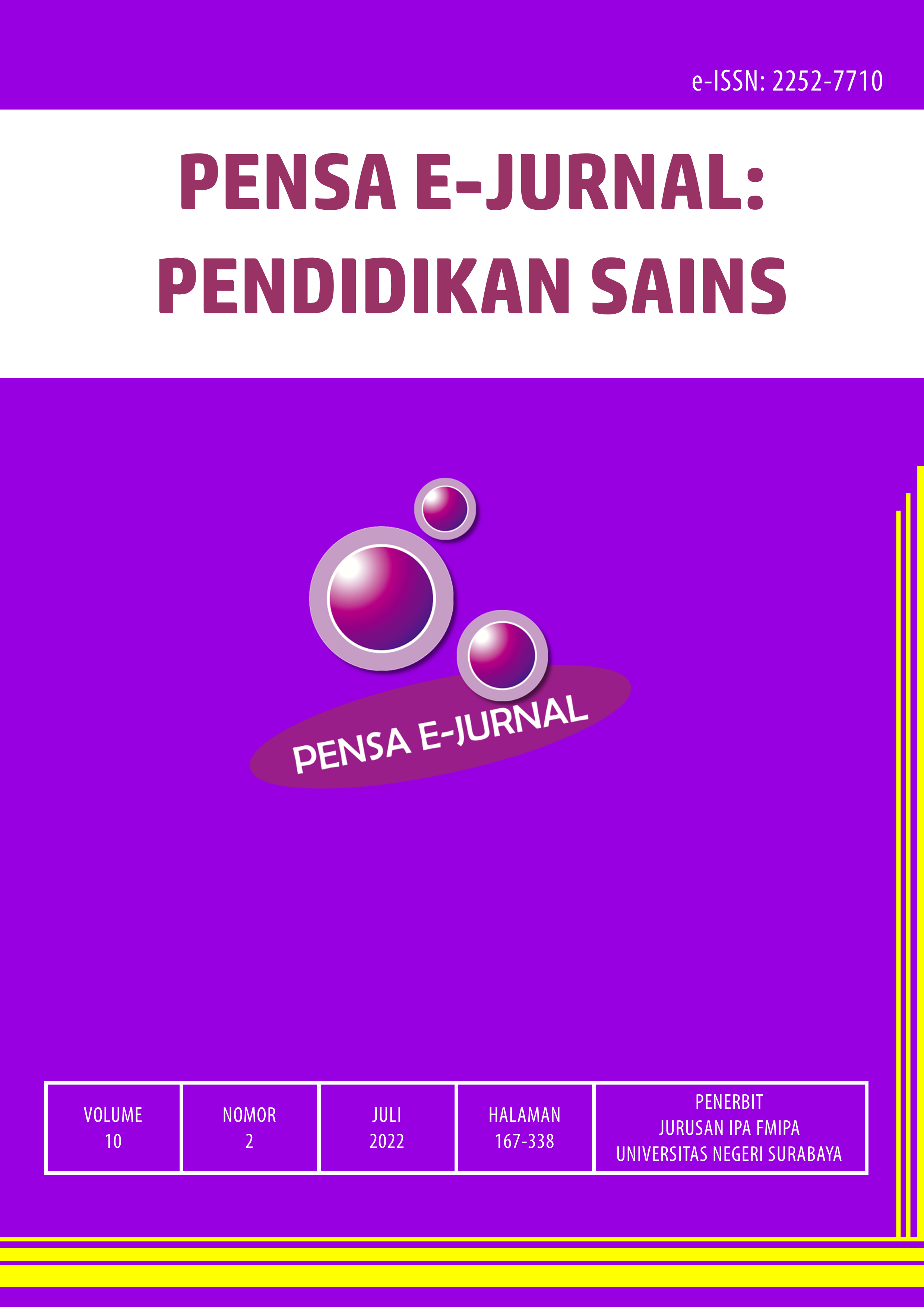PENERAPAN MODEL LEARNING CYCLE 5E BERBANTUAN LKPD UNTUK MENINGKATKAN PEMAHAMAN KONSEP PESERTA DIDIK PADA MATERI ZAT ADITIF
DOI:
https://doi.org/10.26740/pensa.v10i2.45230Keywords:
learning cycle 5E, concept understanding, additive substancesDownloads
Download data is not yet available.
Downloads
Published
2022-07-31
How to Cite
Parawangsa, K. I., & Budiyanto, M. (2022). PENERAPAN MODEL LEARNING CYCLE 5E BERBANTUAN LKPD UNTUK MENINGKATKAN PEMAHAMAN KONSEP PESERTA DIDIK PADA MATERI ZAT ADITIF. PENSA E-JURNAL: PENDIDIKAN SAINS, 10(2), 283–289. https://doi.org/10.26740/pensa.v10i2.45230
Issue
Section
Articles
 Abstract views: 371
,
Abstract views: 371
, PDF Downloads: 445
PDF Downloads: 445

















